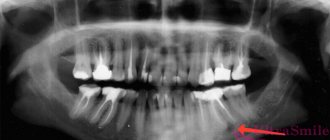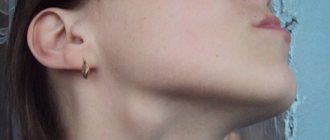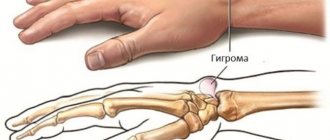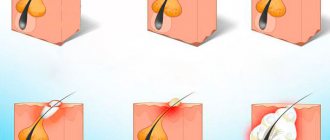Dentistry deals not only with teeth, but also with gums. If unpleasant and painful symptoms appear in the oral cavity, we recommend that you sign up for a consultation - it is better to find out from the doctor that there is nothing wrong, carry out a preventive procedure and get advice on home hygiene. For example, a phenomenon such as a hard lump on the gum may not cause discomfort at first, but can later become a serious problem. To avoid having to be treated and operated on, talk to your doctor as soon as you notice something unusual in your mouth or your sensations.
What does a white bump on your gum mean? That there is an infection or injury. This already gives reason to think about treatment. Next, we will talk about the causes of lumps in adults and young patients.
The main advice that can help anyone with any dental problem: do not be afraid or embarrassed by the doctor. At an early stage, all diseases can be eliminated much faster than later, when the process develops and penetrates into the deep tissues of the gum or tooth.
Cyst of tooth and jaw
Often, patients who go to doctors with complaints of a lump under the jaw on the right or left are diagnosed with a “cyst”. Pathology can develop due to diseased or poorly treated teeth, various jaw injuries, and ENT diseases. A cyst can go unnoticed for a long time, since it is small in size and does not cause any pain. Problems arise as it grows. A formation can be detected in the initial stages only on an x-ray during a routine examination at the dentist.
The cyst may go undetected for a long time
Read about what types of cysts there are and how to treat them in the feature article on the website.
The cyst must be removed surgically. If it is allowed to grow further, it will begin to destroy the bone tissue of the jaw, can lead to facial deformation, and be complicated by such a serious disease as osteomyelitis.
Will it be possible to save the tooth after removing the cyst? This is possible if all procedures are carried out under a microscope. A high-precision optical device will allow the doctor to see the clinical picture in detail, to precisely and precisely influence only the tumor itself, while preserving healthy tissue as much as possible. Removal of a cyst is often performed with resection (cutting off) of the root apex. And the microscope allows you to carry out the operation in the most gentle way and even fill the canals in a retrograde way, that is, through the apex of the root, if, for example, there is a crown on the tooth (without the need to remove it). But, of course, saving is possible if the situation is not too advanced.
Further skin care
Before resorting to your usual skin care, you should visit a cosmetologist. He will select gentle care that will help restore the skin, and gradually the ulcers will stop hurting. For the first week after treatment, you should care for your skin only with water and a cotton pad; you should avoid all kinds of cosmetics, as they can cause acne to reappear.
After treating subcutaneous diseases, it is worth visiting a cosmetologist
Over the next couple of weeks, you need to use products that will protect your skin from exposure to sunlight. They will also gradually relieve itchy skin after bump treatments.
Periostitis of the jaw
Periostitis, or gumboil, occurs when a person is in no hurry to treat teeth affected by caries, pulpitis or periodontitis. The disease can also appear after tooth extraction if an infection gets inside the wound. Less commonly, pathology occurs as a complication of tonsillitis, influenza or ARVI, due to jaw injuries.
The photo shows periostitis on an x-ray
Periostitis is a purulent-inflammatory disease that affects the periosteum. If left untreated, an abscess forms, inside which pus accumulates. The tumor gradually grows, involving the soft tissues of the oral cavity and face, the parotid zone, as well as the lymph nodes, which may cause the patient to feel as if there is a lump under the jaw.
How are lymph nodes treated?
The treatment tactics chosen by the doctor directly depend on the characteristics of the clinical symptoms and the diagnosis. If it's all about a bacterial infection, you can't do without antibiotics. For viruses, antiviral drugs and immunostimulants are indicated. In the case of an autoimmune disorder, the focus is on reducing the activity of specific culprit markers. If cancer is confirmed, chemotherapy, surgery, and immunomodulators are necessary.
If the lymph nodes are enlarged due to a certain dental disease, its step-by-step treatment is carried out. Almost immediately after this, the problem of increased lymphocyte production disappears by itself.
It is extremely important that the patient does not warm the lymph node or apply any compresses unless the doctor has prescribed it. Such actions can aggravate the situation and lead to the development of health-threatening complications.
Phlegmon
This is a serious complication of dental diseases such as pulpitis, periodontitis, cyst, gumboil, osteomyelitis. Occurs against a background of very weakened immunity. There are different types of this pathology depending on the location of the inflammatory process. A lump under the jaw or next to the ear may occur if there is phlegmon in the chewing space, floor of the mouth, parotid or peripharyngeal region.
The photo shows phlegmon
In addition to finding a lump under your jaw or near your ear, you will experience pain when swallowing and difficulty opening your mouth wide and moving your lower jaw. This disease is difficult and takes a long time to treat, often in a hospital setting, but if it is not treated, dangerous complications can arise: serious facial deformities, sepsis, disability and even death.
Preventive measures
No one is immune from the problem described. But there are ways to minimize the risk of its occurrence. Among them:
- receiving qualified medical care for any ailments;
- annual laboratory tests;
- timely treatment of emerging dental diseases;
- sanitation of the oral cavity every six months;
- following medical prescriptions.
Take care of your health, and the risk of enlarged lymph nodes will be minimized.
Submandibular lymphadenitis
A lump under the jaw on the left or right may indicate inflammation of the lymph nodes. With a disease such as submandibular lymphadenitis, the lump can also be located under the ear on the jaw. Moreover, you may find not one, but several balls (bumps) under the skin that feel hard and painful to the touch. Other symptoms also indicate the disease: increased body temperature, general weakness, pain during swallowing movements.
The disease requires timely diagnosis and treatment. Otherwise, it becomes chronic, and pus may accumulate in the lymph nodes. This is very dangerous, since under such circumstances the infection can quickly spread throughout the body and provoke the development of sepsis.
Content:
- Possible reasons
- Dental causes of inflammation of the lymph nodes on the chin
- How to understand that the problem is in the lymph nodes
- Diagnostic measures
- How are lymph nodes treated?
- Preventive measures
If the lymph nodes are inflamed, it is important to undergo a comprehensive medical examination.
This condition can be accompanied by many diseases, both related to the field of dentistry and not related to it. Lymph nodes are peripheral organs of the lymphatic system. They perform the functions of a biological filter. Passing through their tissues, lymph enters different parts of the body and internal organs.
If the lymphoid structure has increased, it means there is an inflammatory process. It is necessary to find out as soon as possible what functional disorders it is associated with. This will allow you to create an effective treatment plan and prevent the development of severe complications.
Sialadenitis
Salivary stone disease, or sialadenitis, appears due to blockage and inflammation of the salivary glands. The disease most often occurs in the submandibular and parotid areas1. Pathology develops mainly on one side of the jaw. Patients who consult a doctor with this problem complain of swelling under the jaw, chin, or near the ears. In the initial stages, the cheek and neck swell; in later stages, pain occurs when opening the mouth, talking, chewing and swallowing food.
The cause of the lump may be salivary stone disease
Sialadenitis can worsen and recur from 2 to 6 times a year. Dysfunction of the salivary glands and hyposalivation (lack of saliva) contribute to various infectious processes in the oral cavity. The most common is generalized periodontitis, due to which you can lose all your teeth.
“The other day, quite unexpectedly, a lumpy lump appeared under my chin, I went for an ultrasound, and there I was stunned by the news that these were stones in the salivary ducts. There were no other symptoms before. As treatment, they prescribed all sorts of pills and physical procedures, massage, but if it didn’t help, they said that they would put them in surgery and cut them up...”
Flo, review from 32top.ru
Folk remedies
The use of effective folk methods and recipes as a supplement to basic drug treatment can significantly speed up the healing process.
- Rinse with saline solutions. Per liter of boiled water - 4 tbsp. spoons of salt, leave to brew for an hour. Afterwards, warm the solution a little and sanitize the oral cavity. Salt disinfects, relieves swelling, and soothes.
- Gargling with herbal infusions. Chamomile, eucalyptus, calendula, and yarrow are suitable for these purposes. 4 tbsp. l. herbs are brewed in 1 liter of boiling water and infused for half an hour. Herbs have a calming and antiseptic effect on the mucous membrane and promote the resorption of compactions.
- Kalanchoe juice. Nourishes and heals inflamed gum tissue, strengthens tooth enamel. Freshly squeezed juice is rubbed into the gums, or a washed leaf, freed from the outer skin, is simply chewed.
- Salt with honey. Healing tandem - salt softens inflamed tissues and helps remove purulent exudate, and honey disinfects, nourishes, and soothes. A mixture of honey and salt is prepared in a 2:1 ratio.
- Garlic tincture. It removes pus well and is a powerful antiseptic, but to avoid burns it should not be used for more than 3 days. The infusion is prepared from 4 heads of garlic, 5 lemons and 700 grams of vodka. The crushed ingredients are infused in alcohol for 3 days. Then rinse the mouth with the solution every 4 hours.
Important! Traditional methods are auxiliary methods of combating the disease, not a panacea, and will not replace drug treatment prescribed by a dentist.
Benign tumor, or lipoma
A lump has appeared under your jaw on the right or maybe on the left, and you are wondering what it is? One of the most common reasons for its appearance is a large wen. To the touch, the formation is soft, motionless and painless. A small lipoma does not pose a serious threat to the body, but if it is not removed, it will continue to grow. The tumor, reaching 5–10 cm in diameter, compresses the nerve endings, disrupts blood circulation and normal cell nutrition. In addition, a large wen is an aesthetic problem, as it spoils the appearance of the face.
A small lipoma does not pose a serious threat
Under unfavorable factors (internal diseases of the body), a lipoma can degenerate into a malignant tumor.
Diagnostic measures
Detecting the problem is very simple - the doctor just needs to feel the area under the chin and carefully examine it. To establish the exact cause of the disease, you need:
- Take blood and urine tests. From them you can understand the nature of the “provocateur” (viral or bacterial).
- Donate blood biochemistry.
- Get an ultrasound of the lymph nodes.
If the doctor suspects oncology, the patient is referred for a computed tomography or magnetic resonance imaging scan or a puncture biopsy. These diagnostic measures allow you to make a correct diagnosis and select adequate treatment.
Atheroma of the sebaceous gland
A tumor resulting from blockage of the sebaceous glands is called atheroma or sebaceous cyst. Most often it occurs where there are a lot of sebaceous glands - on the head or face (mainly below the level of the mouth, under the jaw). Soft to the touch, mobile, painless. The lump under the jaw on the right or left increases in size very slowly and usually does not exceed 40 mm in diameter.
Atheroma most often occurs where there are many sebaceous glands
The bad thing is that atheromas often fester. They can communicate with the surface of the skin - in this case, a cheesy mass can seep out through the hole, which smells unpleasant. To avoid such unpleasant consequences, atheroma, like all neoplasms, is removed surgically.
Treatment options
In oncology, the tumor is removed, and neighboring tissues are irradiated.
Therapy consists of eliminating the cause that caused the discomfort. For this, different groups of medications, physiotherapy, and surgery are used.
- For dental diseases. Restore damaged areas, disinfect holes after removal. For long-term acute stomatitis, lidocaine-based rinses, antibiotics, and aloe juice are used. Anti-inflammatory pastes are also used for pulpitis and periodontitis. For severe pain, analgesics are prescribed.
- For autoimmune disorders. Pain is relieved with NSAIDs or glucocorticosteroids. Chondroprotectors are also used for diseases such as rheumatoid arthritis. For other disorders, vitamin supplements and cytostatics are used.
- For complicated lymphadenitis. They are treated with antibiotics, and in case of purulent processes, tumors are removed surgically.
- For oncological pathologies. Complex therapy is required, including anti-cancer treatments: radiation and chemotherapy, surgery, and a restorative complex of vitamins.
Dermatological disorders are often treated with external remedies, including antibiotics.
The use of folk remedies is appropriate at the rehabilitation stage or as part of additional treatment methods. You need to select recipes together with your doctor to avoid allergies.
Mumps or mumps
With this pathology, the salivary glands located next to the ears become inflamed. If there is a lump, swelling on the jaw or a tumor under the ear, then you can suspect that it is mumps. Additional symptoms: increased body temperature, weakness, pain in the area where tumors are located and when swallowing. Mumps most often affects children and young people.
The tumor may be caused by mumps
This disease is viral and poses a danger of infection to others, so the patient must be isolated from others. It is also important to start treatment for pathology on time because in the absence of adequate measures complications may arise, the most serious of which is infertility.
Possible reasons
The lymphatic system is the basis of immunity . It prevents the spread of pathological microorganisms and blocks the occurrence of many disease processes. In various diseases, lymphocytes begin to actively multiply to slow down inflammation. Then the lymph nodes enlarge.
If structures localized under the jaw and in the neck area “grow,” it is most likely an infection, that is, the disorder is caused by bacteria. But sometimes the condition occurs in the absence of infection.
Among the most common infectious causes:
- Colds, viruses. Their pathogens affect the ENT organs, and general intoxication is observed. In this scenario, sore throats, pharyngitis, tonsillitis, acute respiratory viral infections, acute respiratory infections, sinusitis, otitis media, etc. occur.
- Tuberculosis. With lymphadenitis, the entire neck swells. In advanced cases, lymphoid tissues located in the abdominal cavity and chest increase. The pathology is treated conservatively and surgically.
- Dental problems. Pulpitis, caries, periodontitis - all these are provoking diseases.
- Toxoplasmosis. People become infected with it from domestic animals (most often from cats). In addition to the growth of nodes, with this diagnosis the following are observed: high body temperature, headaches, an increase in the size of the spleen and liver. But very often the disease is asymptomatic.
- Venereal pathologies. Transmitted sexually. The body reacts very sharply to most of them, so already in the first days the patient notices that the lymph nodes have become enlarged and began to hurt, and severe weakness has appeared.
- Herpes. It manifests itself as an increase in the volume of lymphoid tissue in the neck, under the jaw and in the groin. Requires competent antiviral therapy.
Among the factors of a non-infectious nature that lead to the appearance of an unfavorable symptom:
- Oncology. It does not matter whether cancer of the lymphatic system or any internal organ is diagnosed. But in the first case, cancer cells quickly spread with the lymph flow, which contributes to the formation of metastases.
- Autoimmune pathologies. These are conditions in which the immune system begins to malfunction, causing serious damage to the body. This group includes systemic lupus, rheumatoid arthritis, type 1 diabetes, etc.
- Allergy. It manifests itself differently in all people. The most common symptoms are skin rashes and itching. But lymph can also be involved in the allergic process.
- Traumatic injuries to the head and face. If a strong pathological process occurs, lymphocytes begin to be actively produced.
Internal subcutaneous pimple or boil
If there is a small lump under the jaw on the left or right, then this may well be an ordinary subcutaneous pimple. Many people do not think that such a tumor poses a serious threat, but if you start squeezing the pimple, the infection can go inside the body, and you will end up on the surgical table. Moreover, if such pimples appear frequently and do not go away for a long time, then this signals problems with the internal organs, excretory, reproductive and endocrine systems.
The photo shows a boil under the jaw
Do not under any circumstances try to crush, puncture or heat the lumps under the jaw. You can bring an infection inside, cause complications and the appearance of rashes in new places.
Lymphoma (malignant neoplasm)
As we noted above, a lump under the jaw on the right or left may indicate inflammation of the lymph nodes. The tumor is often benign, but in some situations it is malignant.
The pathology occurs against the background of low immunity, hereditary predisposition, prolonged exposure to negative factors (for example, carcinogenic substances), after operations. It is characterized not only by swelling in the area of the lymph nodes, but also by headaches, shortness of breath, cough, sweating, and fatigue.
In any case, you should not delay your visit to the doctor and be sure to get a diagnosis.
Notice
: Undefined variable: post_id in
/home/c/ch75405/public_html/wp-content/themes/UltraSmile/single-item.php
on line
45 Notice
: Undefined variable: full in
/home/c/ch75405/public_html/wp-content /themes/UltraSmile/single-item.php
on line
46
Rate this article:
( 5 ratings, average: 4.40 out of 5)
prevention
- Brezgina A.A. Clinic, diagnosis and treatment of chronic recurrent sialadenitis / Problems of dentistry. – 2006.
Expert “A lump under the jaw may be a pimple or a wen, or it may be a sign of serious dental or other diseases. If the tumor is painful, large or rapidly growing in size, the skin around it has changed color, or pus has accumulated inside - be sure to visit a dentist, ENT doctor or therapist. The sooner the problem is diagnosed, the easier and faster the treatment will be.” Dentist-therapist Elena Vladimirovna Orlova
Consulting specialist
Dzagurova Elina Ruslanovna
Doctor rating: 9.5 out of 10 (2) Specialization: Dentist-therapist Experience: 11 years
Diagnostics
To find out the reason for the appearance of a lump on the jaw, a comprehensive examination is prescribed. First, the doctor examines and collects the patient’s complaints. If a patient has lymphadenitis, at the initial stage of the disease the following symptoms appear:
- slight enlargement of lymph nodes, their mobility;
- pain of the nodes on palpation, turning the neck (pain can radiate to the ear or other parts of the body nearby);
- general weakness;
- low-grade temperature ;
- decreased sleep quality;
On this topic
What could be a growth on the gum?
- Olga Alexandrovna Novikova
- September 3, 2022
With inflammation of the lymph nodes, accompanied by purulent processes, the patient has complaints of:
- increased pain when moving the jaw;
- redness of the skin in the area where pus accumulates;
- severe swelling of the lymph nodes, their pain even without pressure;
- temperature rise to 38 ºC or more.
In the last stages of lymphadenitis, the patient’s well-being deteriorates significantly: inflammatory processes spread to the neck and shoulders, fever appears, and bluish skin is observed at the site of inflammation.
Since, in addition to inflammation of the lymph nodes, there are other reasons for the appearance of lumps on the jaw, it is impossible to make a correct diagnosis based on the clinical manifestation of the pathology. Therefore, laboratory and instrumental diagnostic methods are used.
- blood test (general, advanced);
- bacteriological examination of mucus from the tonsils and upper respiratory tract;
- radiography of the jaw (in different projections);
- ultrasound examination of pathological formation;
- CT or MRI of the head;
- biopsy (if necessary).
Regardless of the mechanism of occurrence of a lump on the jaw, it is important to begin taking therapeutic measures in a timely manner. The earlier treatment is started, the lower the risk of complications.
Comments
I suffered from a severe sore throat, after which two lumps appeared under the jaw on the right, the doctor said that these were lymph nodes and prescribed ointments, but nothing helped. I don’t know what to do anymore.
Mikheeva (05/01/2020 at 18:44) Reply to comment
- Enlarged lymph nodes indicate the presence of an infectious-inflammatory process in the acute or chronic stage. It is necessary to conduct a detailed diagnosis of your condition, for this you need to take smears for flora, take a detailed blood test, visit an ENT doctor and a dentist.
Editorial staff of the portal UltraSmile.ru (05/14/2020 at 09:14) Reply to comment
I have a lump on the left side opposite the corner of my mouth. It doesn’t hurt, nothing hurts, when I press on it, it’s hard. It’s been 2 weeks now and it hasn’t grown or fallen, I feel like always, I don’t have a fever, but I have lower dentures. .What is this?
Tatyana (07/04/2020 at 06:35) Reply to comment
A lump appeared 3 years ago under the jaw in the area of the lymph node and it seems that it is a single whole because... the node lost its mobility when palpated, they took a picture, a lump (1-2 cm) is visible in the picture, they said the problem was teeth, removed the problematic one, the lump remained, but did not progress, did not hurt, but when moving the neck there was an unpleasant sensation sometimes behind the ear too, an oncologist at the local he told the clinic that he wasn’t seeing anything, maybe he’d contact the oncology center, but they didn’t prescribe treatment
Alexey (09.24.2020 at 15:51) Reply to comment
He bit the same spot on his lip twice. It became swollen and there was pain on the lower side of the jaw (the lip hardly hurts), pain when moving the jaw, but not when swallowing. A small lump is felt on the bottom of the bone, which is very painful when touched.
Georgy (07.10.2020 at 19:42) Reply to comment
Write your comment Cancel reply
Why did the lump appear under the chin?
There are three main reasons for the formation of lumps under the skin , each of which needs to be discussed separately:
Inflammation of the lymph nodes due to infectious or viral diseases.
Formation of an internal pimple.
Development of oncology.
A therapist will help determine what is causing the problem. Based on the circumstances that led to the appearance of an internal formation in the neck, he gives a referral to a doctor specializing in the treatment of specific groups of diseases. He, in turn, prescribes a suitable method for eliminating the resulting compaction.
A lump under the chin as a sign of lymphadenitis
Lymph nodes perform an important function in the human body, supporting the functioning of its immunity. It is here that a large number of immune cells are concentrated, which are activated during the invasion of any type of infection or virus and strive to neutralize them.
However, these cells do not always have the strength to delay infection; its pathogens can penetrate inside the lymph node, as a result of which the latter becomes severely inflamed and enlarges. This phenomenon is called “lymphadenitis”. With the help of inflammation of the nodes, the body signals the presence of problems with the functioning of the immune system.
To understand that the cause of the compaction under the skin lies precisely in lymphadenitis, the doctor must detect the diseases that triggered the inflammation.
Usually their list comes down to the following options:
dental diseases: dental granuloma, gumboil, phlegmon;
diseases of the throat and upper respiratory tract - pharyngitis, sore throat.
With lymphadenitis, a lump appears on the right or left under the lower jaw. The accompanying signs of this disease, in addition to increasing compaction, include the following symptoms:
Body temperature rises.
The throat and the lump itself are very sore.
Your health worsens and you feel constant weakness.
The formation on the neck is dense to the touch, hot, and not fused with the surrounding tissues.
The skin around the inflamed lymph node may turn red - this means that lymphadenitis has turned into a purulent form, requiring mandatory medical intervention.
Often the inflammation goes away on its own, and the lymph node reaches normal size. However, this does not mean that treatment can be neglected . Contacting a specialist is necessary: this will help avoid various complications of the disease.
Lump on the throat under the chin: symptoms of a tumor
Sometimes the compaction under the skin is still due to the appearance of a tumor . In this case, both benign and malignant formations are possible. They are easy to distinguish from each other by touch.
If a lump under the chin can move under the finger, grows gradually, and does not hurt, then most likely it is a consequence of a benign tumor of the salivary gland. It is formed when the latter becomes clogged and inflamed.
If the seal is immobile and closely adheres to the surrounding tissues, there is a risk of developing cancer. In this case, the lump hurts a lot, the person’s general condition worsens: there is a feeling of numbness and weakness. The voice often changes: it becomes hoarse.
A lump on the chin under the skin is a painful pimple
Internal acne is a fairly common occurrence and can be explained by many factors, including poor diet and problems with the gastrointestinal tract. On the face, they can form on the forehead, cheeks and chin. Unlike ordinary acne, internal acne does not occur on the surface of the skin, but much deeper - in the dermis.
In this case, the lumps are rarely noticeable to the eye, but are easily felt when you touch them with your fingers: pimples can be very large in size, even with light pressure they hurt.
If the lump appears due to a subcutaneous pimple, then it cannot be eliminated until the body itself copes with the problem. It is strictly forbidden to try to squeeze out a pimple: being too deep, its core will not be able to break through the top layer of the skin, but will easily destroy the internal tissues. Then the pus will spread under the skin and provoke the formation of new acne.
What to do if there is a lump under the chin?
Recommendations for the treatment of any disease are given only after determining the causes of its development. So, if a tumor is discovered, a consultation with an oncologist is necessary, who can send the patient for surgery or chemotherapy.
For lymphadenitis, comprehensive treatment should be prescribed . Its essence is to eliminate the primary disease that caused the enlargement of the lymph nodes. Therefore, the doctor recommends taking anti-inflammatory drugs and antibiotics. If necessary, you can take antipyretics. Be sure to use vitamin complexes to support the immune system. Typically, the course of treatment lasts a week: this time is enough to eliminate inflammation and shrink the lymph nodes.
Sometimes a purulent form of lymphadenitis occurs, requiring surgical intervention. The operation is not considered dangerous or difficult, so the need for it should not be a cause for concern. The essence of the procedure is that the inflamed node in the throat is opened to pump out pus from it.
In addition to medications, it is possible to use traditional medicine recipes to eliminate inflammation of the lymph nodes and, as a result, compaction under the skin.
One of the well-known folk remedies is aloe for lymphadenitis.











